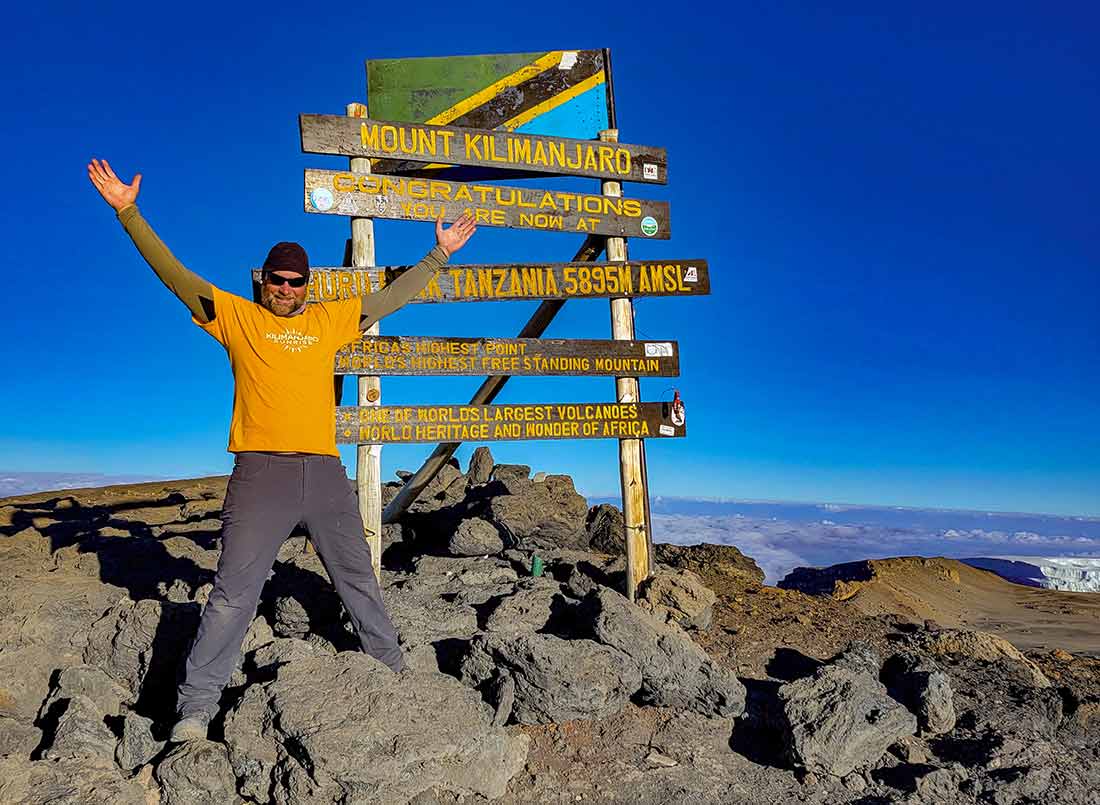Welcome back. This is part three of Things I Wish I Knew Before Climbing Kilimanjaro. In case you didn’t read the first part, we covered the climb not being technical and packing according to the gear list, especially when it comes to the cold and wet conditions on Kilimanjaro. We also discussed tipping your guides and porters.
In part two, we talked about the use of a buff and how versatile it is. We cover the importance of bringing both ear plugs and an eyemask. Why you should rent a private toilet tent and make sure you have time-tested footwear—both socks and shoes.
So without further ado, here is the third installment of Things I Wish I Knew Before Climbing Kilimanjaro.
Roughing It
That’s right, roughing it. Mount Kilimanjaro is a mountain, a pretty remote one. Most people have to travel halfway around the world to get to it. Then you have to hike for several days on it. There are no hotels, no showers, no charging stations, and no restaurants (even though the food is pretty dang good for being on a mountain).
What Replaces Hotels?
I knew I’d be sleeping in tents, but I was not aware that they were going to be that cozy. They are the best I have used, and I do a lot of camping and backpacking. Kailas makes them and they are used for both the dining tent and client tents. See them here:
Why are they so great? For one, they are waterproof and windproof. This is essential for staying comfortable for several days on Kilimanjaro. They are roomy with an added large vestibule on the front with two entrances and a small vestibule on the back. The two entrances are on either side so if the wind and rain are coming from one side, you can use the other side. Furthermore, the sleeping tent is designed to wick away moisture into the vestibule to keep the separate sleeping area warm and dry.
Showers
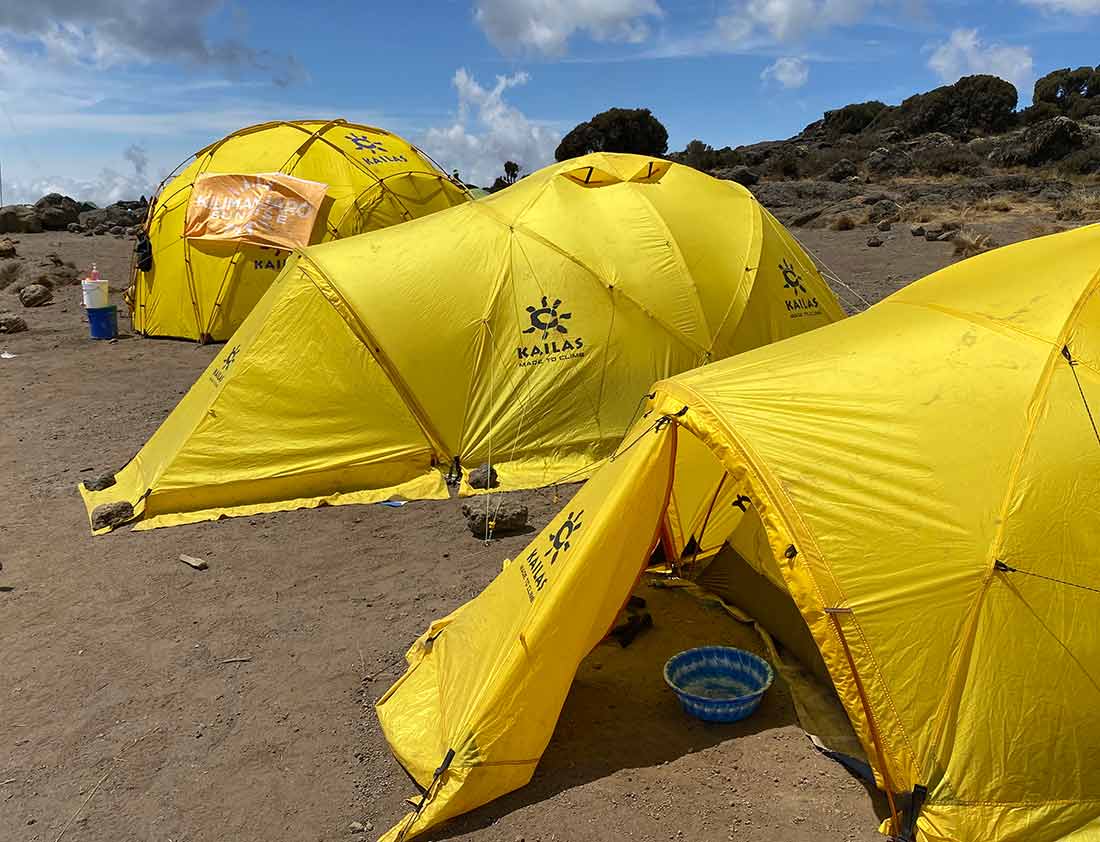
I did know there were no showers on the mountain. I’m okay with that since I spend many days outdoors. There are no showers because the porters have to gather water from nearby streams. Once you pass Karanga camp, those streams are not nearby. They have to hike back down and carry the water back up.
So what replaces a shower? One, you’re going to be cold, so you can use the warm bowl of water the porters bring to clean up inside your tent. They will provide one each morning and evening. Secondly, you should bring wipes to give yourself a nice hobo bath. We recommend combat wipes, they are large and biodegradable.
Charging Stations
Everyone is so used to being able to charge their phones anywhere. Unfortunately, you won’t be able to plug your phone in as you do at the airport since there is no electricity. We recommend bringing power banks, solar chargers, and extra batteries for all your electronics. Furthermore, there is no cellular service or WiFi on Kilimanjaro. You can rent a satellite phone if you really need to call someone. According to satphonestore.com, they start at around $200 for a 2-week rental. We haven’t tried renting them before so we don’t promise anything. You’ll have to rent them before heading to Tanzania.
Restaurants
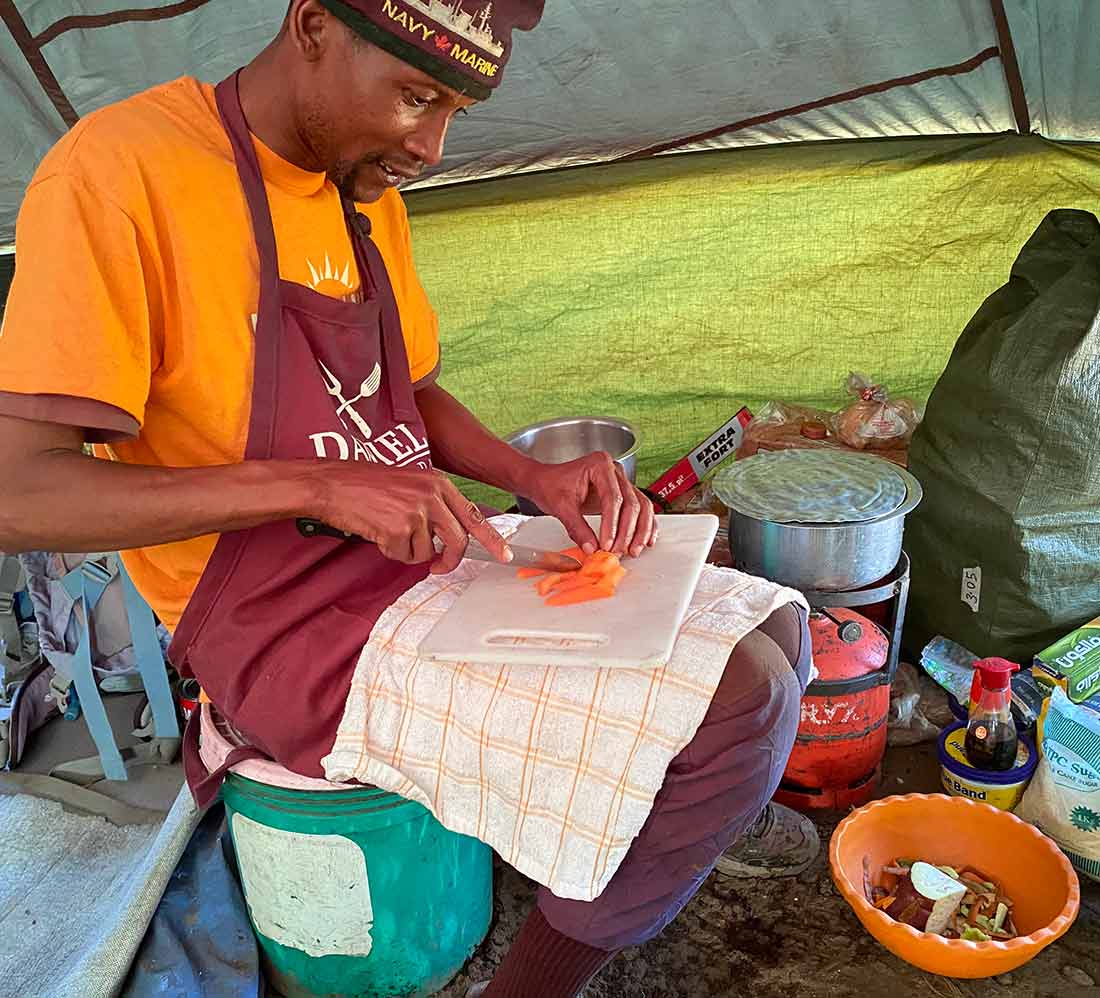
Obviously, there are no restaurants on Kilimanjaro, but you don’t have to make any food. The camp chef makes amazing meals that will satisfy even the pickiest eater. Here is a sample menu: https://kilimanjarosunrise.com/wp-content/uploads/Lemosho-Menu.pdf
Go Slow
One of the most common phrases you will hear on the mountain is “Pole-Pole”. In the local language of Swahili, this means “slowly, slowly”. When climbing from 5,000 to 19,000+ thousand feet, it is important to pace yourself. The slower you go, the more oxygen you will get in your body, and the better you will acclimatize. I am a pretty fast hiker and this was one of the most difficult things for me to do on Kilimanjaro. I constantly heard “pole, pole”.
Prevent AMS by Taking Diamox
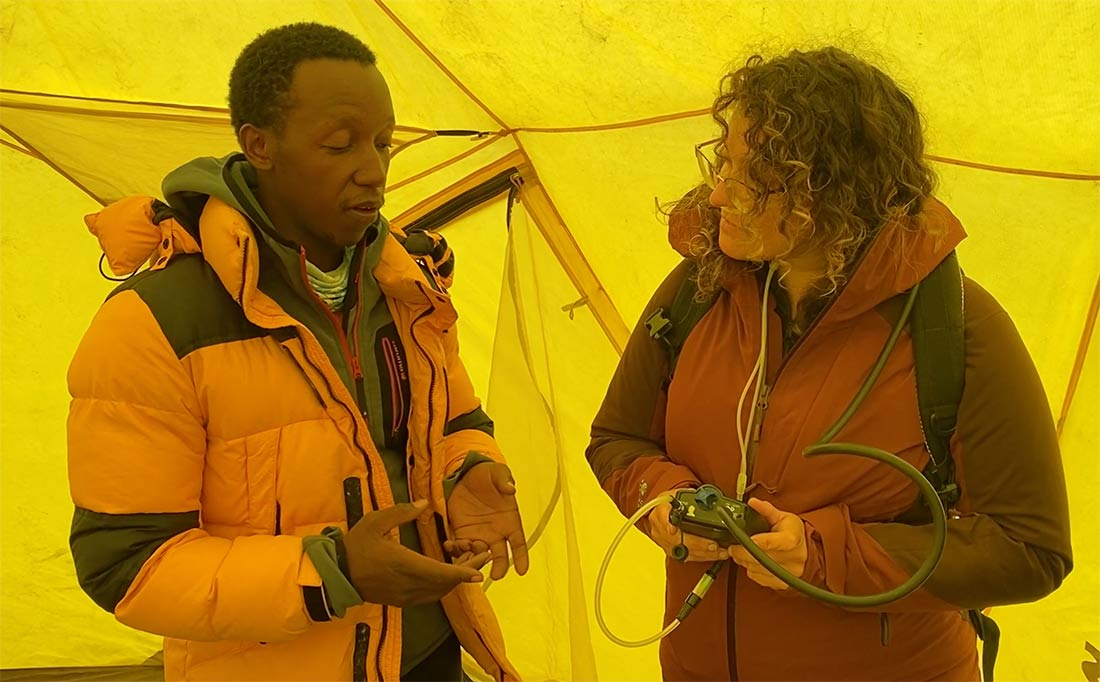
Diamox is a common medication for altitude sickness or AMS. While I am no doctor, I know that this medication helped me during my climb. There are many ways to prevent altitude sickness while climbing Kilimanjaro and using Diamox was the best thing that I ever did. I started taking Diamox once I reached about 10,000 feet and continued taking it throughout the climb until I summited the mountain. This helped me with the headaches, tiredness, and shortage of breath that so many other people experienced when we hit above 10,000 feet.
Make sure to consult your doctor before taking any medication. While it was still a physical struggle, I summited the mountain without any signs of altitude sickness. However, I did get pretty sunburnt, which is one of the side effects of taking Diamox.
If you are allergic to Diamox, you can rent ALTOX. It is a personal oxygen system. You’ll only use it on summit night since taking oxygen can mask the symptoms of AMS. I used it the first time I climbed, from 17,500 feet to the summit and it really helped. But, on the other days, I did struggle with headaches, bloating, nausea, etc.
I would recommend Diamox over ALTOX. Take it before you head to Tanzania to make sure you do not have any issues with it.
Summit Day is Tough, but So Worth It!
The first few days of climbing Kilimanjaro are long, but not too difficult. The terrain changes from straight flats to uphill climbs, and even some downhill.
Another unique aspect of climbing Kilimanjaro is that you go through five different climatic zones – Cultivation, Rainforest, Heather/Moorland, Alpine Desert, and lastly—Arctic. The first three climatic zones are beautiful, scenic, and not as difficult as the last two. When you reach the Alpine Desert you are at 15,000 feet, and that is when the climb gets more difficult. The air is thinner and colder, and the terrain is steeper.
On the last day of the ascent, your team will wake up around 11 PM to prepare to traverse up the side of the volcano, making it in time for sunrise at the Crater Rim of Stella Point or Gilman Point. I remember taking my summit night one step at a time, and between each step was a much-needed gasp for air. Before I knew it, I made it to both Stella Point and then Uhuru Peak, the Summit!
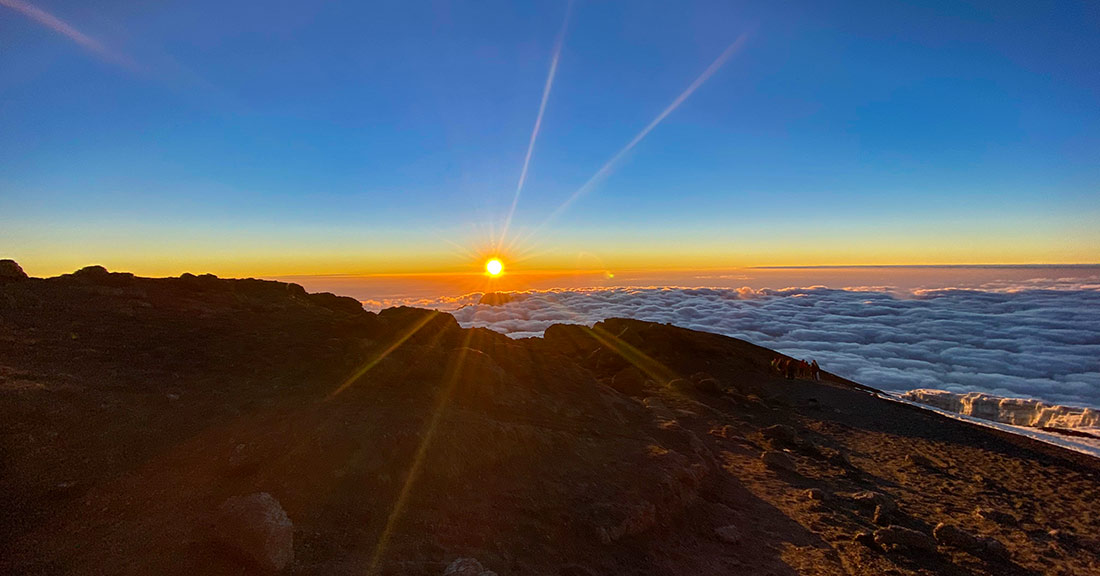
Safari
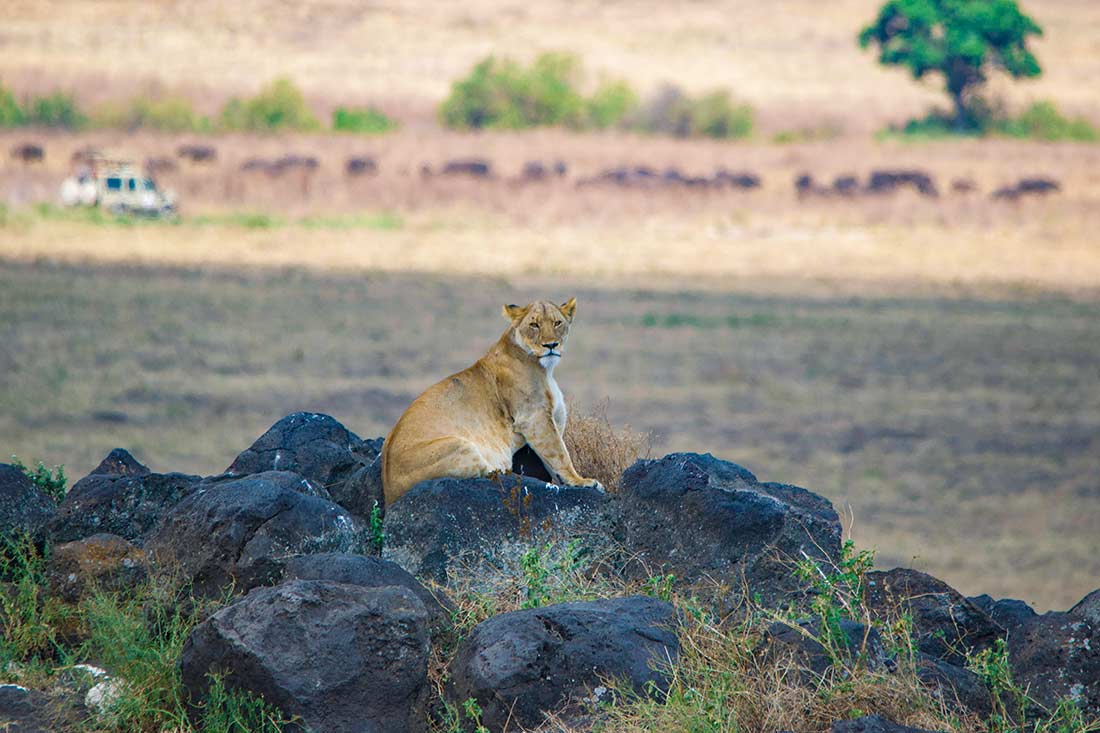
Finally, I would definitely do a safari after your climb. I have now done a safari in 4 out of the 5 safari parks that Kilimanjaro Sunrise offers. They are the Serengeti, Ngorongoro Crater (twice), Tarangire, and Lake Manyara. Consequently, I liked them in that order. They are a great way to recover from your climb and they are among the best parks in the world. If you have the time (and honestly, make some, because when will you be back to Tanzania?) try and get out to the Serengeti. It takes about 10 hours to get there from Arusha, but they break up the drive with other safari parks. The Ngorongoro Crater is also amazing and is packed with animals. If you can’t get to the Serengeti, then at least do a 2-day safari to the Crater and Tarangire.
Final Thoughts
I’m sure there are more items I wish I knew before climbing Kilimanjaro. Feel free to email us and we can add yours. I hope all three installments help you plan your trip. I also hope they make your experience a better one. One that will create memories that last a lifetime.

